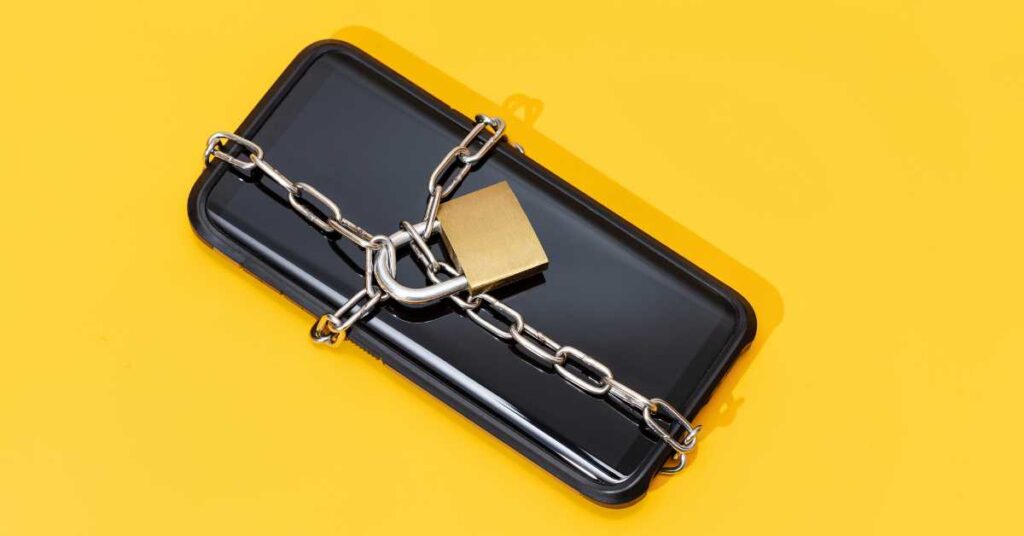In today’s interconnected world, our smartphones and tablets have become an integral part of our lives. We store a vast amount of personal and sensitive information on these devices, ranging from personal photos and emails to banking and healthcare data.
With the growing concern over privacy and data breaches, it has become crucial to secure our mobile devices effectively. Two key techniques that aid in this endeavor are mobile device encryption and remote wiping. In this article, we will delve into these concepts, their importance, and how they work together to protect our data.
Introduction
In this digital age, the security of our mobile devices plays a vital role in safeguarding our personal information. Mobile device encryption and remote wiping are two essential techniques that ensure our data remains protected even if our devices fall into the wrong hands. Let’s dive deeper into these concepts and understand how they contribute to mobile device security.
Understanding Mobile Device Encryption
What is Mobile Device Encryption?
Mobile device encryption is the process of encoding data stored on a mobile device, making it unreadable without the correct encryption key. It acts as a protective shield, ensuring that even if unauthorized access occurs, the data remains inaccessible and indecipherable.
How Does Mobile Device Encryption Work?
Mobile device encryption uses algorithms to transform readable data into an encoded format. The encryption process involves scrambling the data using complex mathematical calculations, making it virtually impossible to decipher without the correct decryption key.
Benefits of Mobile Device Encryption
Mobile device encryption provides several significant benefits:
• Data Confidentiality: Encryption ensures that only authorized individuals can access and decipher the data, maintaining its confidentiality.
• Data Integrity: Encryption safeguards the integrity of data by detecting any unauthorized modifications or tampering attempts.
• Compliance: Many industries and organizations are required by law to encrypt sensitive data to comply with privacy regulations.
• Protection Against Data Theft: In the event of a device being lost or stolen, encrypted data remains protected, minimizing the risk of data breaches.
Exploring Remote Wiping
What is Remote Wiping?
Remote wiping is a security feature that allows users to erase the data on their mobile devices remotely. It acts as a last resort when the device is lost, stolen, or compromised, ensuring that sensitive information does not fall into the wrong hands.
How Does Remote Wiping Work?
Remote wiping can be triggered through various methods, such as using a dedicated mobile device management (MDM) system, third-party security applications, or built-in device features. Once initiated, the remote wiping process erases all data on the device, returning it to its factory settings.
Advantages of Remote Wiping
Remote wiping offers several advantages:
• Data Protection: It helps protect sensitive data from unauthorized access, especially in situations where physical recovery of the device is not possible.
• Prevention of Data Misuse: Remote wiping ensures that personal or confidential data stored on the device does not end up in the wrong hands, minimizing the potential for identity theft or corporate espionage.
• Compliance: Remote wiping assists organizations in adhering to data protection regulations by providing a mechanism to erase data remotely in case of a security breach.
The Synergy between Encryption and Remote Wiping
Enhancing Data Security
Encryption and remote wiping complement each other in enhancing data security. Encryption ensures that even if unauthorized access occurs, the data remains unreadable. If a device is lost or stolen, remote wiping can be utilized as an additional layer of protection to erase the data and prevent any potential misuse.
Lost or Stolen Devices
When a mobile device is lost or stolen, the combination of encryption and remote wiping is particularly valuable. Encryption ensures that even if the device falls into the wrong hands, the data remains secure and inaccessible. Remote wiping allows the user to erase the data remotely, minimizing the risk of sensitive information being compromised.
Protecting Against Unauthorized Access
Encryption and remote wiping also safeguard against unauthorized access in scenarios where a device is left unattended or temporarily entrusted to someone else. If an unauthorized individual attempts to gain access to the device, encryption prevents them from reading the data. Additionally, in situations where the device cannot be physically recovered, remote wiping provides an effective measure to remove all data, ensuring it remains protected.
Best Practices for Mobile Device Security
To maximize the effectiveness of encryption and remote wiping, it is essential to implement best practices for mobile device security. Here are some key recommendations:
Strong Passwords and Biometrics
Set up strong, unique passwords or utilize biometric authentication methods such as fingerprint or facial recognition to secure access to your mobile device. This adds an extra layer of protection in case the device falls into the wrong hands.
Regular Software Updates
Keep your device’s operating system and applications up to date. Regular software updates often include security patches that address known vulnerabilities, reducing the risk of unauthorized access.
Appropriate App Permissions
Be mindful of the permissions you grant to applications installed on your device. Only provide necessary permissions and review app permissions periodically to ensure they align with your requirements.
Secure Network Connections
Avoid connecting to unsecured Wi-Fi networks, especially when accessing sensitive information or performing financial transactions. Utilize virtual private networks (VPNs) when connecting to public Wi-Fi networks to encrypt your data and protect it from potential eavesdropping.
Common Misconceptions about Encryption and Remote Wiping
Encryption is Only for Tech Experts
Contrary to popular belief, encryption is not exclusive to tech experts. Modern mobile devices offer built-in encryption capabilities that can be enabled by any user, ensuring data security without requiring advanced technical knowledge.
Remote Wiping Erases Data Forever
While remote wiping erases data from the device, it is important to note that it may still be recoverable using specialized techniques or tools. However, remote wiping significantly reduces the risk of data falling into the wrong hands by making it challenging for the average individual to access.
Encryption and Remote Wiping are Only for Business Users
Encryption and remote wiping are beneficial for individuals and organizations alike. While businesses often implement these security measures to protect sensitive corporate data, personal users can also take advantage of them to secure their private information.
Challenges and Limitations
While encryption and remote wiping provide significant security benefits, they also come with certain challenges and limitations that need to be considered:
User Compliance
Ensuring user compliance with encryption and remote wiping policies can be challenging. Users may overlook or disable these security features, compromising the overall effectiveness of the protection measures.
Cloud Storage and Syncing
If data is stored or synced with cloud services, encryption and remote wiping may not apply to the cloud copies. It is important to consider additional security measures for cloud-stored data to maintain a comprehensive security posture.
Device Compatibility
Older devices or certain operating systems may not support the latest encryption standards or remote wiping capabilities. It is crucial to assess device compatibility and limitations before relying solely on these security measures.
Future Trends in Mobile Device Security
As technology continues to evolve, new trends in mobile device security emerge. Some of the future advancements in this field may include:
• Enhanced encryption algorithms and protocols to withstand emerging threats.
• Integration of biometric authentication with encryption for stronger security.
• Improved remote wiping mechanisms, such as selective data erasure or remote device locking.
Conclusion
Mobile device encryption and remote wiping are essential components of a comprehensive mobile security strategy. Encryption protects data at rest, ensuring its confidentiality and integrity, while remote wiping acts as a safeguard against device loss or theft. By combining these techniques, users can mitigate the risks associated with unauthorized access and potential data breaches. It is crucial for individuals and organizations to adopt best practices, stay informed about the latest security trends, and prioritize mobile device security to protect their valuable data.
Frequently Asked Questions (FAQs)
Can encrypted data be decrypted without the encryption key?
A1: No, encrypted data cannot be decrypted without the correct encryption key. The encryption algorithms used are designed to be secure and ensure data confidentiality.
Can remote wiping be undone?
A2: Once remote wiping is initiated and completed, it is generally not reversible. It is important to exercise caution while triggering remote wiping, ensuring it is necessary and irrecoverable data is backed up.
Can I recover data from a device after remote wiping?
A3: Remote wiping erases data from the device, making it challenging for the average individual to recover. However, specialized techniques or tools may potentially recover some data, especially if not overwritten.
Are encryption and remote wiping available on all mobile devices?
A4: Most modern mobile devices offer encryption and remote wiping capabilities. However, it is important to check the device specifications and operating system compatibility to ensure these features are available.
Are there any alternatives to remote wiping for data protection?
A5: While remote wiping is an effective method, alternative measures include remote device locking, geolocation tracking, or encryption-based secure containers that isolate sensitive data from the rest of the device.






